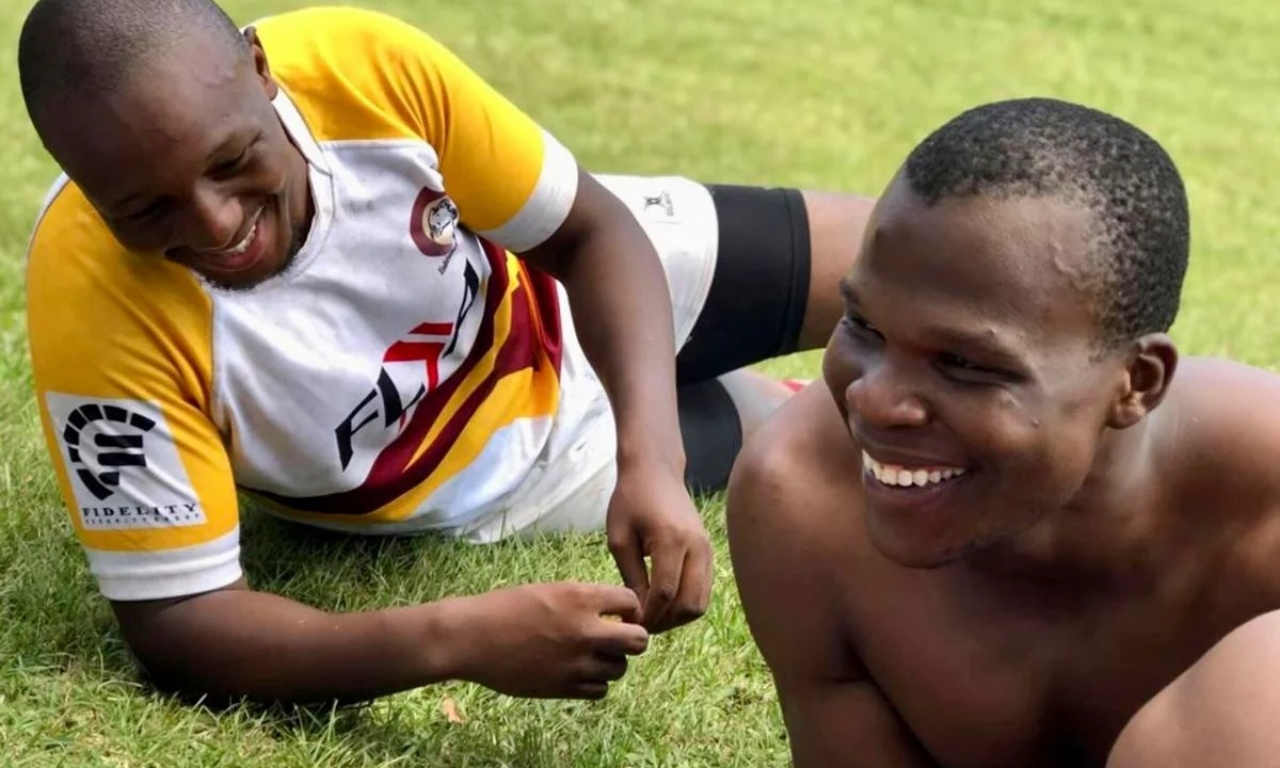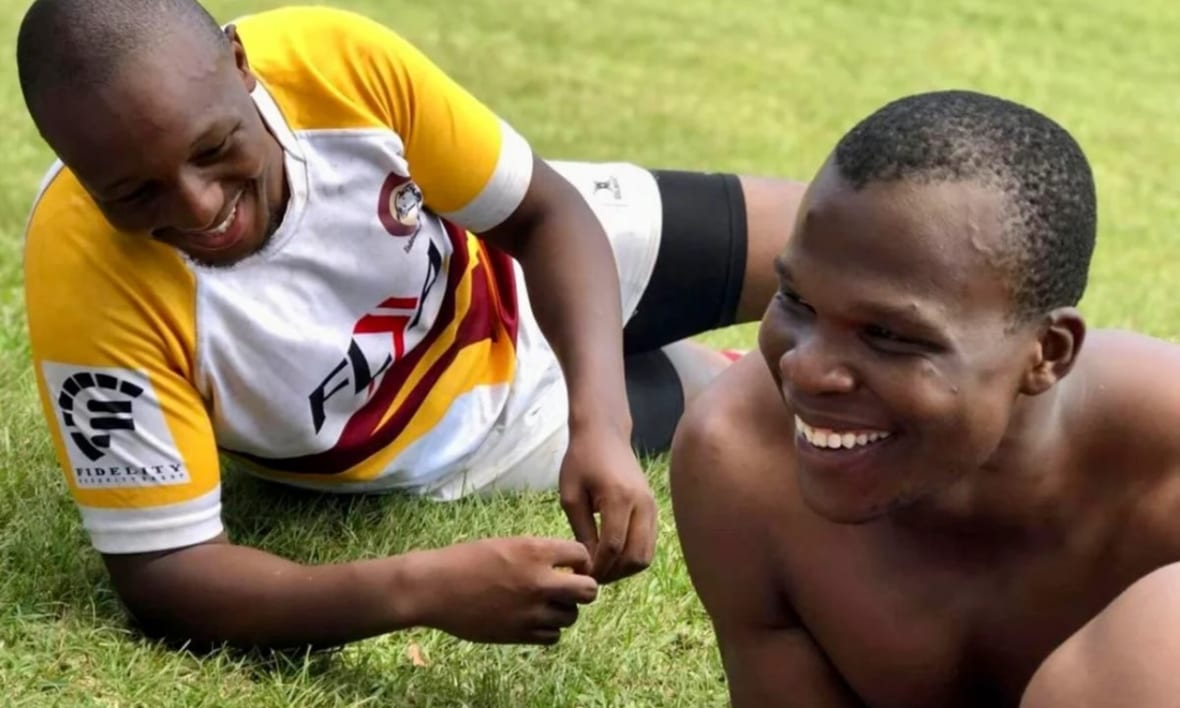South African rugby player killed by Hawaii police had CTE
HONOLULU (AP) — A Black former professional rugby player from South Africa shot by police months after moving to Hawaii The post South African rugby player killed by Hawaii police had CTE appeared first on TheGrio.

The autopsy finding could help explain Lindani Myeni’s bizarre behavior before the deadly 2021 confrontation with Honolulu police officers.
HONOLULU (AP) — A Black former professional rugby player from South Africa shot by police months after moving to Hawaii suffered from a degenerative brain disease often found in American football players and other athletes subjected to repeated head trauma, autopsy results show.
The finding could help explain Lindani Myeni’s bizarre behavior before the deadly 2021 confrontation with Honolulu officers. It also offers another layer of detail about a shooting that gained international attention during heightened calls for police reform following the 2020 murder of George Floyd by a Minneapolis police officer.
An addendum to Myeni’s autopsy report obtained by The Associated Press shows his brain tissue was sent to the Boston University CTE Center, which found the 29-year-old father of two suffered from stage three chronic traumatic encephalopathy. Commonly known as CTE, the disease can only be diagnosed posthumously.

Stage four is the most severe level and experts say it’s alarming for someone as young as Myeni to have such a critical case of CTE.
Lindsay Myeni, who filed a wrongful death lawsuit alleging police shot her husband because he was Black, said she was shocked to learn of the CTE diagnosis.
“I had no clue. He had no clue,” she said from Richard’s Bay, South Africa, where she now lives. “So it was kind of devastating because it felt like … someone was telling me like, hey, he died from racism at 29, but he was going to be killed from his favorite sport at 50 or 51 anyway.”
Police were called to a Honolulu home about a stranger who had entered uninvited. He said, “I have videos of you,” claimed a cat at the home was his and made other strange comments, according to Honolulu’s prosecuting attorney, who decided not to pursue charges against any of the officers.
Police officials have said officers weren’t reacting to his race, but rather his behavior, which put officers’ lives in jeopardy. Prosecutors found that deadly force was justified because Myeni physically attacked officers, leaving one with a concussion.
He had been emotional earlier that day about family issues and the couple had visited numerous spiritual sites around the island of Oahu, Lindsay Myeni said, but he showed no signs of CTE symptoms. Those include memory loss, confusion, impaired judgment, impulse control problems, aggression and depression.
She said that looking back, she wondered if maybe he was depressed or had mood swings during the pandemic, “but didn’t we all?”
Myeni started playing rugby at around age 13, and by 19 had played professionally with the Border Bulldogs in South Africa, his wife said. He also played some rugby in Colorado and Florida, she said. She was aware of him only having two or three concussions.
Dr. Masahiko Kobayashi, the Honolulu medical examiner who autopsied Myeni and concluded he died from gunshot wounds, said he suspected CTE after hearing about Myeni’s behavior and his contact sports past.
“The case of Mr. Myeni was really simple when I just determined the cause and manner of death. But the circumstances were very complex, and the public was greatly impacted by this case,” he said.
Kobayashi said he hoped the CTE finding might provide a clearer picture of what led to Myeni’s death.
“We medical examiners sometimes act as a finder of facts more than the cause and manner of death,” Kobayashi said. “After I thought about all of this, I believed the results of a CTE study should be a part of a full and complete understanding of the circumstances surrounding the death of Mr. Myeni, which is why I decided to order the test.”
But CTE doesn’t help Lindsay Myeni understand what happened that April 14, 2021, night.
“To me, it still doesn’t answer any questions as to why you would shoot him,” she said.
Myeni’s behavior sounded like “classic symptoms” related to CTE, “confusion, disorientation, acting out in a very different way,” said Paul Anderson, a lawyer in Kansas City, Missouri, who represents families of athletes with brain injuries, but is not involved in the Myeni case.
The youngest case of stage three CTE diagnosed in medical literature was Aaron Hernandez, 27, making Myeni “an example of pretty severe CTE for someone that age,” said Dr. Daniel Daneshvar, an expert on the condition and Harvard Medical School assistant professor.
Hernandez, a former New England Patriots football star, killed himself in 2017 in the prison cell where he was serving a life-without-parole sentence for murder.
While people with CTE tend to have problems with memory, thinking, impulsivity and paranoia, there could be other explanations, Daneshvar said.
“We can’t say for sure whether or not CTE in anyone’s brain can cause them to do any particular action,” he said.
Honolulu Prosecuting Attorney Steven Alm said the CTE finding isn’t surprising and doesn’t change his conclusion that police were justified in using deadly force.
“It’s just a reminder for everybody that danger can come about, either because somebody just has that type of personality or they have some kind of … mental or emotional disability or, like this,” Alm said.
The investigation by Alm’s office found that two days before the shooting, Myeni told his kickboxing instructor that he was going through “crazy African spiritual stuff.”
About 30 minutes before the shooting, Myeni interjected himself in a situation where police were investigating a vehicle break-in and had to be told to go away by both the victim and officers, according to Alm’s investigation.
Myeni then asked one of the officers for money to buy food and tried to get into the back of a police car.
From there, he drove a short distance to a home where tourists who didn’t know him were staying. Wearing a feathered headband, he followed them into the house, told the woman, “I have videos of you,” claimed a cat there was his and made comments about hunting.
The frightened woman called 911.
Officer body camera videos showed Myeni punching responding officers, leaving one with facial fractures and a concussion. Myeni continued punching an officer even after he was shot once in the chest, Alm said.
Bridget Morgan-Bickerton, a Honolulu attorney representing Myeni’s wife, said he wasn’t aggressive, “until he was subjected to unjustified aggression, being yelled at, at gunpoint, in the dark to ‘get on the ground’ with no announcement of who was asking.”
Three months before the shooting, the Myenis moved to Hawaii, where Lindsay Myeni grew up, believing it would be safer for their two Black children than in another part of the U.S.
As a single mother of a 2- and 3-year-old, she doesn’t know if she can ever return to Hawaii, so they’re in South Africa, where the couple met while she was on a Christian mission trip. But it’s difficult there, too.
“It’s like I even moved out of our little township that he’s from and moved to the suburbs because … it’s hard to even be at the house,” she said. “I just went for a birthday party back to his home and I’m like, oh, this is so painful.”
TheGrio is FREE on your TV via Apple TV, Amazon Fire, Roku and Android TV. Also, please download theGrio mobile apps today!
The post South African rugby player killed by Hawaii police had CTE appeared first on TheGrio.










![Miley & Tish Cyrus Talk Unfollow-gate, Miley Getting Kicked Out of ‘Weird Religious School’ [Video]](https://www.lovebscott.com/wp-content/uploads/2025/06/865688e1ddee49569f017841c629d342_md.jpg.webp)

